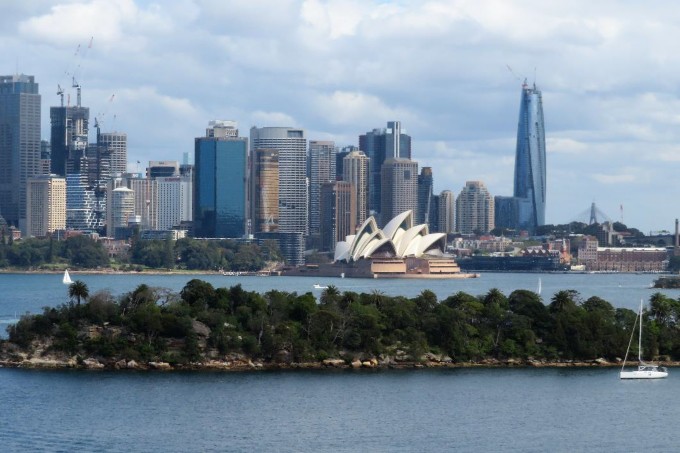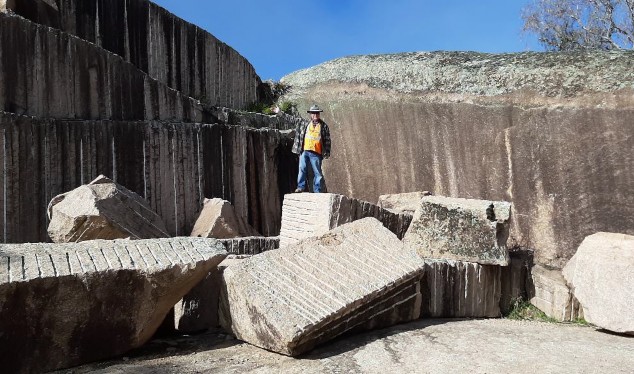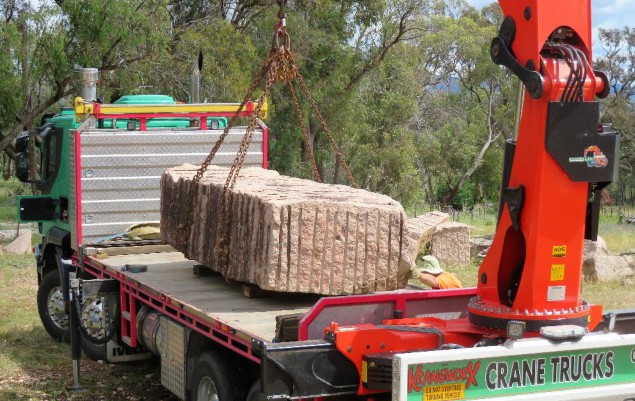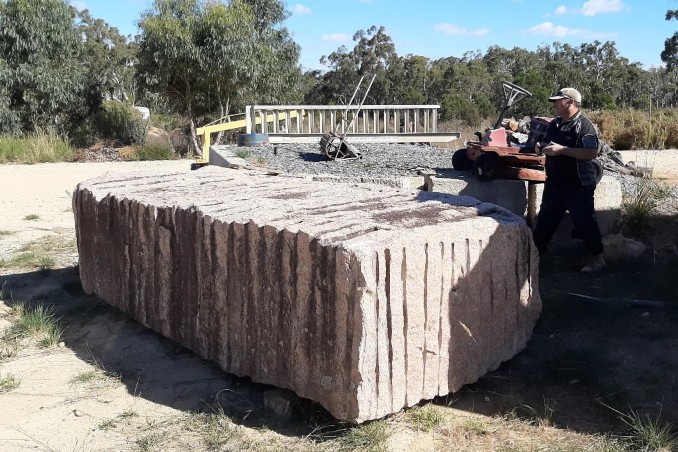
Author: Mike Smith, Director, National Rock Garden
Extract from National Rock Garden Newsletter No. 21, June 2021
Our NRG Newsletter issue number 20 described six ‘Aspirational Rocks’ which we are working on bringing to Canberra for the NRG during the next 6 to 18 months. Another rock which has always been a high priority for the Rock Garden is Tarana Granite. While we do not have the necessary approvals to place more rocks right now, we have been using temporary storage locations to commence the movement large rocks such as the Mawson Charnockite specimens last year. Our Tarana Granite specimen is another example.
The Carboniferous-age Tarana Granite is a pink, medium-grained granite, composed largely of quartz and feldspar with minor biotite. It is quite famous as the colourful lower half of the Sydney Opera House, as shown below.

Tarana Granite is an important monumental stone, including at the ANZAC Memorial in Hyde Park in Sydney. For many decades, Tarana granite was extracted, crushed and laid as the platform surface for all of the railway stations in NSW which did not have an asphalt seal.

Central West geologists Max Rangott and Colin Bembrick assisted in the selection of potential blocks for the NRG. Ultimately a block which had been cut to the shape of a rectangular prism was chose. The block, calculated to weigh 11 tonnes, was uplifted by Southern Highlands contractor Kraneworx during late November 2020, as shown in the image below.

This specimen is currently being stored on a farm near Marulan, where it can be readily picked up and moved to the National Arboretum Canberra later this year.



